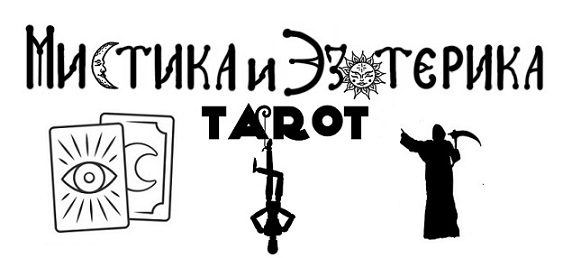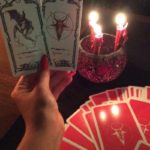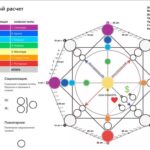Гарнье-пожиратель
В 1573 году за многочисленные убийства детей был арестован Жиль Гарнье, который сознался, что он — человек-волк-одиночка. По его словам, однажды ночью во время охоты ему явился дух и предложил свою помощь. Призрак подарил Жилю чудодейственный бальзам, при помощи которого можно было превращаться в волка. Но делать это стоило только в полнолуние и в ночи с Только в это время ощущалась вся ярость и мощь зверя. Гарнье рассказал на суде, что совершил убийства четверых детей в возрасте до 14 лет. В шкуре волка он не просто убивал, но и поедал плоть своих жертв. Рассказ убийцы был полон самых жутких и мерзких подробностей.
Жиля Гарнье признали виновным в «преступных деяниях, которые он совершил после превращения в волка, а также в колдовстве». Убийца был сожжен на костре в январе 1573 года.
Болезнь ликантропия
Клиническая ликантропия вызывается нарушением работы определенных участков коры головного мозга, отвечающих за движение и ощущение. С помощью сенсорной оболочки мозга человек формирует представление, как об окружающем мире, так и о себе самом. Дефекты оболочки позволяют обладателю синдрома считать себя животным и визуализировать его поведенческие привычки.
Психическое заболевание ликантропия
Стоит признать, что ликантропия у человека (от греч. «ликос» — волк и «антропос» — человек) действительно является психическим нарушением. К психологии оно имеет опосредованное отношение: это заболевание не может быть временным дисбалансом на почве стресса или сниженной самооценки. «Оборотни» всегда имеют в комплексе параноидальный бред, острый психоз, биполярное расстройство личности или эпилепсию.

Ликантропия — симптомы
Синдром оборотня в силу редкости и небольшой изученности обладает расплывчатым списком симптомов, легко причисляемых к целому перечню психических деформаций. Как бы ни была уникальна ликантропия, признаки ее похожи на шизофрению:
- Навязчивые мысли. Больной убежден, что он – представитель животного мира или умеет в него превращаться по желанию.
- Хроническая бессонница и активность в ночное время. Люди с подобными расстройствами мало спят, но вовсе не от того, что работают по ночам.
- Желание поделиться своей «тайной» с миром. Больной оправдывает любые поступки своим вторым «Я» и не боится рассказывать об этом друзьям и знакомым.
Как излечиться от ликантропии?
Специализированное лекарство от ликантропии пока не изобретено. Ее симптомы приглушаются теми же способами, которыми лечат аналогичные болезни с искаженным восприятием собственной личности. В их число входят антидепрессанты разной мощности, препараты от бессонницы и регулярные беседы с психотерапевтами. К сожалению, заболевание можно стабилизировать, но не излечить полностью.
Психиатры до сих пор знакомятся со всевозможными проявлениями ликантропии, поскольку она не менее разнообразна, чем мир животных. Люди-«оборотни» встречаются все реже или избегают встречи с врачами, подсознательно догадываясь об экстраординарности своего заболевания. Она плохо поддается лечению, но легко контролируется медиками.
Ликантропия — миф или реальность?
Споры о том, существует ли ликантропия и насколько она распространена, регулярно ведутся среди медиков. В этом она похожа на порфирию – болезнь вампиров, возникшую из-за генетических отклонений, вызванных браками между родственниками. При ней нарушается выработка гемоглобина, провоцируя быстрое разрушение кожи под воздействием солнечного света.
Порфирия и ликантропия схожи в том, что раньше они считались чертами характера сказочных персонажей. С развитием медицины оказалось, что мифы и детские «страшилки» утрировали реальные проблемы со здоровьем. Синдром оборотня стали считать нарушением психологии в 1850 году: с того момента доктора насчитали 56 людей, считающих себя оборотнями, умеющими превращаться в дикое или домашнее животное.

Ликантропия — реальные случаи в наши дни
Такое необычное заболевание ликантропия, реальные случаи которой встречаются не так часто, вызывает у людей желание ассоциировать себя с волком. Из 56 случаев 13 были связаны с тем, что пациент считал себя этим животным и наотрез отказывался верить в свое «человеческое» происхождение. Остальные «оборотни» были уверены в том, что они – змеи, собаки, кошки, лягушки или пчелы. Врачи с удивлением признаются, что были уверены в том, что придется столкнуться с большим количеством больных.
Самым изученным остается синдром оборотня, настигший испанского серийного убийцу Мануэля Бланко, попавшего к врачам в 1852 году. Он добился от суда признания того, что часть преступлений совершил волк, в которого он превращался. Пытаясь убедить психиатров в своей правоте, он показывал им воображаемые клыки и требовал на обед исключительно сырое мясо. При взгляде в зеркало Мануэль говорил, что видит там волка.
Снится Оборотень Расскажи свой сон
Считалось, что оборотни могут быть врождёнными и обратимыми. Изначально считалось, что убить оборотня можно, нанеся ему смертельную рану, например поразив в сердце или отрубив голову. Настала ночь: ушёл сотник с молодою женою в свою опочивальню; заперлась и белая панночка в своей светлице.
Фольклорный образ оборотня может быть связан с психиатрическим расстройством «клиническая ликантропия», при котором человек считает себя каким-либо животным, к примеру — волком. II век н. э.), позже достаточно много случаев заболевания приводили судебные врачи во время процессов средневековой инквизиции.
Тема оборотней издавна присутствует в фольклоре разных народов, популярна в литературе, кинематографе. Первым фильмом, который посвящён оборотням, является немой фильм «Оборотень», вышедший в 1913 году. После него последовало ещё несколько немых фильмов про оборотней. В 1935 году студия Universal Pictures выпустила фильм «Лондонский оборотень», а в 1941 году — «Человек-волк».
Abilities
- Heightened Senses: Werewolves can smell, see and hear far better than humans.
- Accelerated Healing: Werewolves heal quickly from most injuries.
- Enhanced Agility: Werewolves can jump, run, climb and react faster than humans.
- Enhanced Strength: Werewolves are much stronger than humans.
- Pain Transference: Werewolves can absorb and alleviate pain from other people/creatures and can «heal» in some cases.
- Memory Transference: Werewolves can transfer (give or take) memories by inserting claws into the nape of an individual’s neck. This ability can establish mind-to-mind communication and, with practice, allow for memory manipulation or erasure.
NOTE: The above abilities are common to all three types of werewolves. Even in human form they appear to possess all of these abilities although there is evidence that the abilities are not always active and must be «turned on» to work. Healing, for instance, can be delayed by choice as long as the werewolf is conscious.
Unique Abilities
- Some werewolves have shown the ability to sense illness and, in one case, the onset of an epileptic seizure. This seems to be due to a combination of their «Heightened Senses» working in concert on a subconscious level.
- Some werewolves have so much mastery over their body that they can inhibit their scent. Making them undetectable to other werewolves.
Victims of lycanthropy
Werewolves
- «Nearly all of them are on Voldemort’s side.»
- —Remus Lupin regarding Greyback’s pack
Fenrir Greyback
Remus Lupin
| Werewolf | Notes |
|---|---|
| Fenrir Greyback | Leader in the werewolf community and an ally of the Death Eaters, noted to be the most savage werewolf in history, incarcerated after the Second Wizarding War. |
| Remus Lupin | Bitten by Fenrir Greyback as a child, member of the Order of the Phoenix, killed by Antonin Dolohov during the Battle of Hogwarts. |
| Silas Crump | A petty criminal and an unregistered werewolf. |
| Chiara Lobosca | Bitten by a werewolf as a child. |
| Wagga Wagga Werewolf | Discussed by Gilderoy Lockhart during his time as Defence Against the Dark Arts professor at Hogwarts and in his book Wandering with Werewolves. Lockhart may have invented this individual entirely, but since he often simply took credit for others’ deeds, the werewolf itself may have existed, but been defeated by someone else. |
| Unidentified werewolf | During Arthur Weasley’s ward during his stay at St Mungo’s Hospital for Magical Maladies and Injuries, this new werewolf was presumably befriended by Lupin. |
| Anonymous author | Author of Hairy Snout, Human Heart who penned a heartrending account on his struggle against Lycanthropy in the 1970s. |
| Unidentified werewolf | Killed Scarlett in the summer of , became Penny Haywood’s Boggart. |
| Group of werewolves | A group of werewolves living underground, most of whom joined forces with Voldemort for a promise of a better life. |
Other victims
- «Greyback attacked him. Madam Pomfrey says he won’t — won’t look the same anymore…. We don’t really know what the aftereffects will be — I mean, Greyback being a werewolf, but not transformed at the time»
- —Ginny regarding Greyback’s attack on Bill Weasley
Bill Weasley’s scarred face
| Wizard | Notes |
|---|---|
| Bill Weasley | Attacked by Fenrir Greyback while he was in human form; Bill did not actually become a werewolf, although he did obtain some lupine tendencies (particularly a liking for rare steaks). |
| Defenders of Hogwarts | It can be assumed that there were more victims at the battle that suffered from lycanthrophy to some degree in later days. It would be similar to the effects suffered by Bill Weasley at the hands of Fenrir Greyback. Although Greyback is described as ‘a grey streak,’ suggesting he is in his animalistic form, during the battle and biting people that were down, it can be assumed that he was, in fact, in human form, as Remus Lupin was also in the Battle in human form. |
| Lavender Brown | Savaged by Fenrir Greyback during the Battle of Hogwarts, later died from it. |
Powers Abilities
Lucian confronting a werewolf.
Werewolves display a number of greatly enhanced physical attributes. As with their rivals, the Vampires, Werewolves are immortal. The original Werewolf survived over 800 years of captivity with no food or water in what appeared to be a type of hibernation. They possess enhanced senses of smell, hearing, and sight that are superior even to those of wolves, not just humans. Werewolves are also able to sense Vampires in close proximity to themselves and possess physical strength, durability, reflexes, and speed superior to those of most Vampires, and can break through solid concrete walls.
It should be noted that Werewolves seem to be far physically stronger than the Vampires, as every hand-to-hand confrontation between the two races under normal circumstances has ended with a Werewolf victory. A first-generation Werewolf is seen to be able to send a fully armored Vampire flying at least ten feet through the wall of a villager’s hut, without even yet being fully transformed. Werewolves can also use their claws and strength to scale sheer surfaces, having been seen to crawl along walls at great speed in pursuit of prey.
A Werewolf in Underworld: Evolution.
Werewolves possess superb physical resilience and remarkable regenerative abilities, however, their recovery abilities are hampered by the presence of silver in their bodies. It is mentioned in Underworld that silver is fatal if it penetrates the internal organs. Silver is the Werewolves’ only weakness, as they seem to be violently allergic to it. A new variation on this is the use of Silver Nitrate Bullets to inject the silver directly into a Werewolf’s bloodstream. Despite Ultraviolet ammunition being designed for killing vampires, in Evolution, Selene is able to kill several just-turned Werewolves with that type of weapon.
A special note should be made of William Corvinus, the original Werewolf. William possesses the same physical traits as his descendants, but to a far greater degree. His strength is such that he is able to engage his Hybrid relative, Michael Corvin, in combat, winning at first until Michael was able to wrap his hands around the Werewolf Elder’s head and tear it apart — especially impressive as Michael had just killed several first-generation Werewolves with ease and William had not fed in over half a millennium. His agility and reflexes are such that he is able to leap dozens of feet and escape Selene’s explosive shurikens without any major injury.
Человек с головой волка
Тринадцатилетний Жан Гренье был умственно отсталым. Но дело даже не в этом. А в его лице. В нем были ярко выражены собачьи черты: сильно очерченные скулы, заостренные клыки и налитые кровью глаза. Жан верил, что он самый настоящий человек-волк.
Однажды он признался девочкам, что больше всего на свете хочет их съесть, и когда зайдет солнце, он это сделает. Конечно, Жану не поверили и даже посмеялись над ним. Но, когда зашло солнце, мальчик свое обещание исполнил. Он напал на девочку и очень сильно искусал, но ей удалось сбежать. Гренье был арестован. Во время суда над ним мальчик заявил, что в нем живет волк, и он может освобождать его, когда заходит солнце. По словам молодого ликантропа, свои возможности он получил от самого дьявола.
Ликантропия — что это
На вопрос о том, что такое ликантропия, может ответить любой психотерапевт или психиатр. Это расстройство самовосприятия и поведения, предполагающее, что его обладатель считает себя животным или проявляет свойственные ему повадки. Банальное переубеждение здесь не срабатывает, поскольку больной искренне верит в свое второе «Я», считая «разоблачителей» лгунами.
В Средние века врачи отказывались считать этот навязчивый синдром заболеванием. «Лечением» занималась церковь, предполагая под ним заточение в монастыре или сожжение на костре. Это не способствовало изучению синдрома, поэтому о нем известно сравнительно немного. Современный институт Гронингена в Нидерландах занимается изучением этого расстройства и сбором всех известных случаев.
OriginsEdit
18th century woodcut of a werewolf attack.
A werewolf is a mythological or folkloric human with the ability to shapeshift into a wolf, either purposely or after being placed under a curse or affliction (often a bite or scratch from another werewolf).
A few references to men changing into wolves are found in Ancient Greek literature and mythology. The Neuri was a tribe which transformed into wolves once every year for several days and then changed back to their human shape. Lycaon was transformed into a wolf because he had ritually murdered a child. Virgil at one point also wrote about human beings transforming into wolves.
The werewolf is a widespread concept in European folklore, existing in many variants, which are related by a common development of a Christian interpretation of underlying European folklore developed during the medieval period. From the early modern period, werewolf beliefs also spread to the New World with colonialism. Belief in werewolves developed in parallel to the belief in witches in the course of the Late Middle Ages and the Early Modern period. Like the witchcraft trials as a whole, the trial of supposed werewolves emerged in what is now Switzerland in the early 15th century and spread throughout Europe in the 16th, peaking in the 17th and subsiding by the 18th century.
Силы и способностиПравить
- Перевоплощение — обычные вервольфы трансформируются только при полной луне. Чистокровные вервольфы могут это делать по собственному желанию, вне зависимости от положения луны и времени суток.
- Инфекционный укус — через укус вервольф может превратить другого человека в подобное существо.
- Когти и клыки
-
Сверхчеловеческая сила — вервольф намного сильнее человека.
Клыки вервольфа после трансформации
- Сверхчеловеческая ловкость
- Сверхчеловеческая скорость — вервольфы намного быстрее человека.
- Сверхчеловеческая выносливость — вервольфы намного выносливее человека.
- Обострённые чувства — вервольфы могут видеть в темноте, обладают острым обонянием и слухом.
- Неуязвимость — вервольфы не могут быть убиты с помощью обычных средств и оружия.
- Регенерация — через некоторое время раны, полученные от обычного оружия заживают.
DescriptionEdit
Werewolves (also known as Wolf Men, Lycanthropes or Lypustons) are common werebeast foes. Their appearance in the series isn’t surprising; mythologically, werewolves and vampires are closely related, and some cultures consider them the same manner of creature. An aversion to silver is a trait common to both, werewolves and vampires, and both are creatures cursed to roam the night in search of innocent victims to sate their hunger. The victim of a vampire or werewolf becomes one themself.
Death is the only sure release from the curse, as seen in Castlevania: Rondo of Blood. Once defeated by Richter, the werewolf transforms back into an ordinary man before expiring.
One playable werewolf is Cornell from Legacy of Darkness and Judgment.
Бюро Прютцмана
19 сентября 1944 года обергруппенфюрер СС Рихард Хильдебрандт пишет докладную записку на имя Гиммлера, в которой предлагается создать партизанский отряд СС, который бы действовал в тылу наступающей Красной армии. В записке впервые употребляется слово «вервольф», которое заимствовано, скорее всего, из романтической саги Германа Лёнса (сага вышла в 1910 году; повествует о жизни и борьбе партизанского отряда XVII века, действовавшего в районе Люнебургской пустоши). Поскольку роман стал одним из главнейших произведений литературы в направлении «фёлькише», его тиражи были на втором месте в нацистской Германии после «Майн Кампф».
Рейхсфюрер Гиммлер поручает обергруппенфюреру СС Гансу-Адольфу Прютцману, наделив его особыми полномочиями, формирование боевых отрядов «вервольфа». Опыт Прютцмана, полученный им в результате «работы» на оккупированных землях Украины, а также хорошее знание родного для него района Восточной Пруссии помогло ему в этой работе.
Прютцман создал так называемое «Бюро Прютцмана», расположенное в предместьях Берлина.
Структура «Бюро Прютцмана»
- начальник штаба — (нем. Chef des Stabes) — штандартенфюрер СС Карл Чирский
- начальник штаба — (нем. Chef des Stabes) — бригадефюрер СС Вальтер Опландер
- общие вопросы по обучению и техническому обеспечению — (нем. Werwolf-Training Amt) — бригадефюрер СА Зибель
- специалист СС по вопросам пропаганды — штандартенфюрер СС Гюнтер Д’Альквен
- кадровые вопросы — (нем. Werwolf-Personel-Amt) — штандартенфюрер СС Коттхаус
- отдел обеспечения — (нем. Werwolf-Nachrichten Abteilung) — гауптманн полиции Швайцер
- участие женщин в «вервольфе» (нем. Werwolf-Weiblich Abteilung) — фрау Майш (присоединилась весной ).
- сотрудничество с частями вермахта — (нем. Vertreter) генерал-лейтенант Юппе
- санитарный батальон — (нем. Werwolf-Sanität Abteilung) — доктор Херт
Appearances
The Harry Potter Wiki has 34 images related to Werewolf.
- Harry Potter and the Philosopher’s Stone (First mentioned)
- Harry Potter and the Philosopher’s Stone (film) (Mentioned only) (Heard)
- Harry Potter and the Chamber of Secrets (Mentioned only)
- Harry Potter and the Chamber of Secrets (film) (Mentioned only)
- Harry Potter and the Prisoner of Azkaban (First appearance)
- Harry Potter and the Prisoner of Azkaban (film)
- Harry Potter and the Prisoner of Azkaban (video game)
- Harry Potter and the Goblet of Fire (Mentioned only)
- Harry Potter and the Order of the Phoenix (Appears in human form)
- Harry Potter and the Order of the Phoenix (film) (Appears in human form)
- Harry Potter and the Order of the Phoenix (video game) (Appears in human form)
- Harry Potter and the Half-Blood Prince (Appears in human form)
- Harry Potter and the Half-Blood Prince (film) (Appears in human form)
- Harry Potter and the Half-Blood Prince (video game) (Appears in human form)
- Harry Potter and the Deathly Hallows (Appears in human form)
- Harry Potter and the Deathly Hallows: Part 1 (Appears in human form)
- Harry Potter and the Deathly Hallows: Part 2 (Appears in human form)
- Harry Potter and the Cursed Child (Mentioned only)
- Harry Potter and the Cursed Child (play) (Mentioned only)
- Fantastic Beasts and Where to Find Them (Mentioned only)
- LEGO Harry Potter: Building the Magical World
- LEGO Harry Potter: Characters of the Magical World
- LEGO Harry Potter: Years 1-4
- LEGO Harry Potter: Years 5-7
- LEGO Harry Potter
- Pottermore
- Harry Potter: The Character Vault
- Harry Potter: The Creature Vault
- Harry Potter: Hogwarts Mystery
- Harry Potter: Wizards Unite
Notes and references
- Lupine Lawlessness: Why Lycanthropes Don’t Deserve to Live
- ↑ Harry Potter and the Prisoner of Azkaban
- ↑ Writing by J.K. Rowling: «Werewolves» at Wizarding World
- Harry Potter and the Chamber of Secrets
- Harry Potter and the Order of the Phoenix
- J.K. Rowling’s Comments at Carnegie Hall
- ↑ Harry Potter and the Half-Blood Prince
- ↑ Harry Potter and the Deathly Hallows
- Harry Potter and the Philosopher’s Stone, Chapter 13 (Nicolas Flamel)
- Harry Potter and the Prisoner of Azkaban, Chapter 9 (Grim Defeat)
- Harry Potter: Hogwarts Mystery, Year 1, «Howling Hallowe’en» Achievement
- Harry Potter: Hogwarts Mystery, Year 3, Side Quest «Penny for Your Thoughts»
- Harry Potter and the Philosopher’s Stone, Chapter 15 (The Forbidden Forest)
- Barnes and Noble Yahoo! Chat, available here
| Magical Creatures by classification | |
|---|---|
| X | Flobberworm · Horklump |
| XX | Augurey · Bowtruckle · Chizpurfle · Clabbert · Diricawl · Fairy · Ghoul · Gnome · Grindylow · Imp · Jobberknoll · Mooncalf · Porlock · Puffskein · Ramora · Winged horse |
| XXX | Ashwinder · Billywig · Bundimun · Crup · Doxy · Dugbog · Fire crab · Fwooper · Glumbumble · Hippocampus · Hippogriff · Hodag · Jarvey · Knarl · Kneazle · Leprechaun · Lobalug · Mackled Malaclaw · Moke · Murtlap · Niffler · Nogtail · Pixie · Plimpy · Pogrebin · Red Cap · Salamander · Sea serpent · Shrake · Streeler · Winged horse |
| XXXX | Centaur · Demiguise · Erkling · Erumpent · Golden Snidget · Graphorn · Griffin · Hidebehind · Kappa · Kelpie · Merpeople · Occamy · Phoenix · Re’em · Runespoor · Snallygaster · Sphinx · Tebo · Thestral · Thunderbird · Troll · Unicorn · Winged horse · Yeti |
| XXXXX | Acromantula · Basilisk · Chimaera · Dragon · Horned Serpent · Lethifold · Manticore · Nundu · Quintaped · Wampus cat · Werewolf |
| Defence Against the Dark Arts (D.A.D.A.) |
|---|
| D.A.D.A. at Hogwarts |
| Classroom 3C · Temporary Classroom · Hogwarts Turris Magnus · Teacher’s Office · Storeroom · Staircase · Lesson Cup · Race Cup · Dumbledore’s Army |
| Professors |
| Arsenius Jigger · Albus Dumbledore · Galatea Merrythought · Patricia Rakepick · Quirinus Quirrell · Gilderoy Lockhart · Remus Lupin · Bartemius Crouch Junior (as Alastor Moody) · Dolores Umbridge · Severus Snape · Amycus Carrow (as Dark Arts teacher) |
| Textbooks |
| The Dark Forces: A Guide to Self-Protection · Break with a Banshee · Gadding with Ghouls · Holidays with Hags · Travels with Trolls · Voyages with Vampires · Wanderings with Werewolves · Year with the Yeti · The Essential Defence Against the Dark Arts · Defensive Magical Theory · Dark Arts Defence: Basics for Beginners · Confronting the Faceless · Magical Drafts and Potions |
| Spells studied at Hogwarts under D.A.D.A. |
| Aqua Eructo Charm · Boggart-Banishing Spell · Counter-curses · Counter-jinxes · Counter-spells · Curse of the Bogies · Defensive Charms · Densaugeo · Deprimo · Disarming Charm · Everte Statum · Freezing Spell · Full Body-Bind Curse · Fumos Duo · Green Sparks · Hex-Breaker· Hex-deflection · Hex Zapper · Homorphus Charm · Human-presence-revealing Spell · Impediment Jinx · Knockback Jinx · Lacarnum Inflamari · Nonverbal spells · Patronus Charm · Red Sparks · Reductor Curse · Salvio hexia · Seize and Pull Charm · Shield Charm · Smokescreen Spell · Snake-Vanishing Spell · Stunning Spell · Tickling Charm · Tongue-Tying Curse · Trip Jinx · Verdimillious Charm · Verdimillious Duo Spell · Verdimillious Tria · Wand-Lighting Charm · Cruciatus Curse · Imperius Curse · Killing Curse |
| Creatures studied at Hogwarts under D.A.D.A. |
| Banshee · Boggart · Cornish Pixie · Dementor · Erkling · Ghost · Ghoul · Grindylow · Gytrash · Hag · Hinkypunk · Iguana · Imp · Inferius · Kappa · Nocturnal beasts · Red Cap · Snake · Troll · Vampire · Vampire bat · Werewolf · Yeti · Zombie |
Деятельность
Согласно воспоминаниям самих участников войны, немецкое радио сообщило о начале действий организации 2 апреля 1945 года.
Внутри рейха практически сразу обнаружились соперники данной структуры, которые захотели создать параллельные организации или поставить существующие под свой контроль. Непосредственно в СС было две структуры — «Вервольф» и подразделение под командованием Отто Скорцени, называвшееся «Ягдфербанд» (нем. SS-Jagdverband). Число подобных организаций могло вырасти до трёх, если бы был воплощён в жизнь совместный проект создания силами гестапо и СД подразделения, известного как «Бундшу».
В последние дни войны организацией распространялись письма и листовки с угрозами в адрес тех, кто отказывался поддерживать их и содействовать им: «Мы покараем каждого изменника и его семью. Наша месть будет смертоносной!».
«Превратим день в ночь, а ночь — в день! Бей врага, где бы ты его ни встретил! Будь хитрым! Воруй у врага оружие, боеприпасы и продовольствие! Немецкие женщины, помогайте борьбе „Вервольфа“, где это только возможно!»
Лозунг отрядов «Вервольф»
Согласно воспоминаниям Маршала Советского Союза Василия Чуйкова, стандартной тактикой «вервольфов» были следующие действия: спрятавшись в руинах зданий или используя для этого сложный рельеф местности, они пропускали вперёд себя колонну советских войск, после чего выстрелами из фаустпатрона подбивали первую и последнюю машины. После этого «вервольфы» сразу же начинали расстреливать спешившихся солдат, которые лишились возможности совершить быстрый манёвр.
В своём первом выступлении в качестве преемника на посту фюрера адмирал Карл Дёниц приказал всем членам «Вервольфа» прекратить боевые действия и сложить оружие. Его приказ был исполнен не всеми отрядами.
Types of Werewolves
There are three known types of werewolves in the Teen Wolf mythology.
Omega
An Omega is the “lone wolf”; existing without a pack and an Alpha.
They have all the werewolf abilities mentioned above but are considered weaker than other types because they are not part of a pack.
Werewolves can become Omegas by choice or be forced out of a pack by the Alpha or by circumstance.
NOTE: The term «omega of the pack» has been used in reference to the lowest ranking member/members of a pack. This does not indicate a drop in actual werewolf status but is instead used as an insult.
Beta
Betas are members of a pack and, because of this association, they are considered stronger than Omegas.
They do not seem to have any special abilities beyond those mentioned above.
NOTE: Both Betas and Omegas will show various skill levels based on experience, therefore, a direct comparison of power levels is difficult.
Alpha
An Alpha is the leader of a pack of werewolves. It is the strongest, most powerful and so far the most lethal variety of Werewolf.
True Alpha
A Beta or Omega can become an Alpha through strength of character or force of will alone. These are called “True Alphas” and are very rare.
A True Alpha’s status can only be taken by a Beta of their own making.
Special Abilities
- An Alpha’s bite can transform a human into a werewolf. The bite usually only has two outcomes — transformation or death although there are exceptions (See Lydia Martin and Kanima
It appears a scratch from an Alpha, if it goes deep enough, can sometimes be transformative. (See Kate Argent).
).
- Alphas have limited telepathy and mental control over the betas that they create and some other Shapeshifters (See Werecoyote).
- Bites, scratches and other wounds inflicted by an Alpha will not heal as quickly as other injuries.
- Alphas can heal the extremely ill with their pain transference ability but they give up part of the «spark» that makes them an Alpha. This can result in a loss of Alpha status.
- Alphas can, by killing their betas, become stronger. (See Alpha Pack)
Beast of Gevaudan
The Beast of Gevaudan is unlike any other werewolf seen on the show. It is larger than even Peter Hale’s monstrous form from Season 1 and, instead of shapeshifting, the Beast creates a body composed of what appears to be black smoke or shadows around itself.
These differences stem from two potential sources —
- Sebastien Valet became a werewolf after drinking rainwater from the paw print of a wolf. While this piece of werewolf lore has been mentioned on the show before, this is the only example of it working.
- According to Teen Wolf Creator Jeff Davis, his form and transformation come from how evil he already was when he became a werewolf.
The beast does not fit into any of the previously known categories of werewolf and was extremely powerful without the benefit of a pack or Alpha status.
- Jeff Davis regarded these werewolves as those who have achieved a balance between their wolf nature and their humanity that keep them from becoming beasts.
- This form is only seen with Laura Hale, Talia Hale, and Derek Hale.
- When a werewolf shifts into this form, they revert to human form without their clothes intact.
- Derek achieved this form when he died and came back to life when it seemed he was losing his powers.


 Наука в Древнем Риме
Наука в Древнем Риме  Автономная пожарная сигнализация
Автономная пожарная сигнализация  Как улучшить работу вашего мозга
Как улучшить работу вашего мозга  Как приворожить мужчину?
Как приворожить мужчину?  Каким требованиям должен соответствовать автобус, предназначенный для международных поездок?
Каким требованиям должен соответствовать автобус, предназначенный для международных поездок?  Губернатор Техасу Грегг Ебботт відкритий для розширення грального бізнесу напередодні виборів
Губернатор Техасу Грегг Ебботт відкритий для розширення грального бізнесу напередодні виборів  Практика энергетического очищения при солнечном затмении
Практика энергетического очищения при солнечном затмении  Можно ли изменить судьбу и повлиять на нее?
Можно ли изменить судьбу и повлиять на нее? 




